
|
|
 |
|
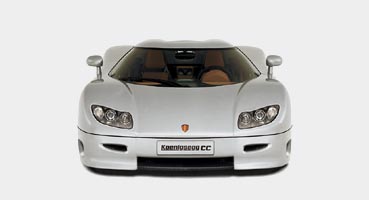 |
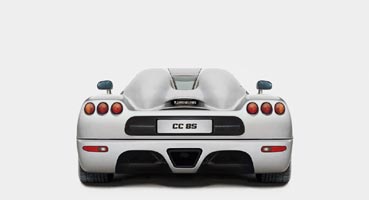 |
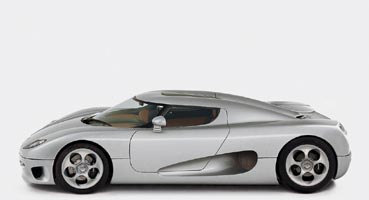 |
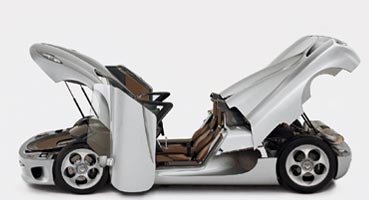 |
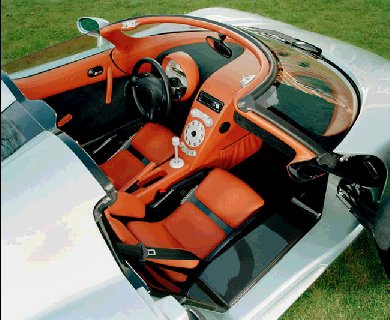 |
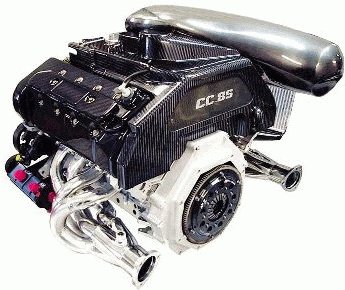 |
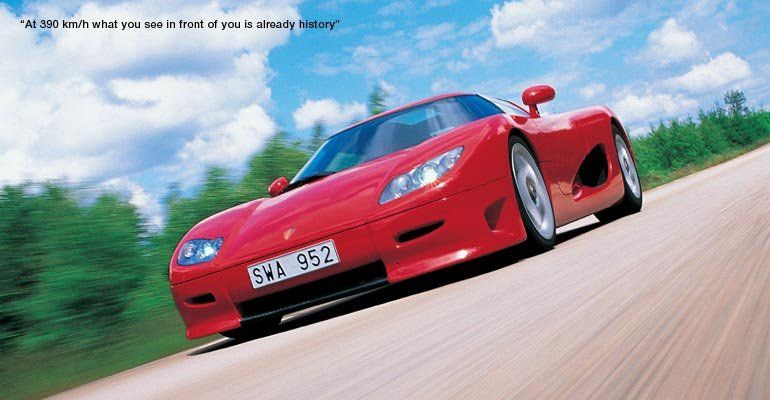 |
|
|
For 2002, Koenigsegg, a small Swedish manufacturer, have updated thier V8 supercar. Compared to the 2002 CC, the new CC S8 features lights that are now held in a single unit instead of triple unit clusters. Also gone is the rear wing which is now optional. Following the 2002 Geneva Motor Show, the first red Koenigsegg CC 8S was delivered to its' owner.
The Koenigsegg CC body and chassis are made of autoclaved epoxy pre-impregnated carbonfiber. The use of this material enables the car to be extremely strong, lightweight and completely resistant to corrosion. The chassis is designed by composite engineers with experience from Formula One racing. It has a fully semi-monocoque self supporting center unit, that provides both world class rigidity and driver safety. It has 21 layers of carbonfiber varying between unidirectional and woven material, with intermediate spacing of aluminium honeycomb, as well as integrated tool grade solid aluminium joining points. The total weight of the semi-monocoque is a mere 62 kg. The engine sits on top of a machined aluminium dry sump unit that also act as a supporting beam for the rear subframe. This milled aluminium subframe contains the Cima gearbox and supports the power transmission and suspension systems. It is kept rigidly in place by chromemolybdenium rods that are bolted to the chassis. The specially developed semi-stressed supercharged and intercooled Quad Cam 4 valve 4.7l V8 engine delivers 655 smooth horsepowers at 6,800 rpm and 750 nm of torque at 5,000 rpm. Its very low weight, only 240 kg, has been achieved with the use of carbonfiber, titanium and aeroplane specified aluminium alloy. Carbonfiber valve and timing covers save about 12 kg compared to conventional materials. This combined with its small outer dimensions makes it ideal for use in a super car. The centrifugal supercharging system is coupled to a large size intercooler with lightweight carbonfiber ducts and end-tanks. The intercooler manages to lower the charged intake air temperature from 150 degrees C to a mere 60 degrees C, allowing for a 1.2 bar boost pressure with a compression ratio of 8.6:1. The specially developed gearbox by Cima relies heavily on experience from racing, even Formula One. The 6 speed gearbox is probably the strongest and most reliable transaxle gearbox ever built for a mid engine car. The gearbox incorporates an internal oil pump for reliable lubrication, and a large oil cooler, so that it can take the strain from the brutal force of the engine. The final gear ratio is calculated to propel the car close to 400 km/h at 7300 rpm. The body of the Koenigsegg CC 8S has been designed to incorporate the unique easy access removable and stowable hardtop. Pulling two handles from within unlocks the lightweight carbonfiber roof panel. The hardtop can now easily be removed and placed in the front luggage compartment, where it fits perfectly. Story by Koenigsegg Automotive AB |
|
General |
Engine |
Performance |
|
Year : 2002 Make and Model : Koenigsegg CC 8S Curb Weight : --kg Layout : Mid Engine Longitudinal / N/A Transmission : 6-Speed Manual, Air to Oil Cooler, AP Racing Clutch |
Configuration : 90 ° V8 Displacement : 4700 cc Power : 654.9 bhp (488.4 kw) @ 6800 rpm Torque : 750 nm @ 5000 rpm Redline : 7500 rpm |
Top speed : 386.2 kmh (240 mph) Acc. 0-100 kmh : 3.4 s Acc. 0-160 kmh : --s Acceleration 0-¼ mile : 10 s Lateral Acc. : --g |
|
|
Site created by Alin Sãndulache |
|